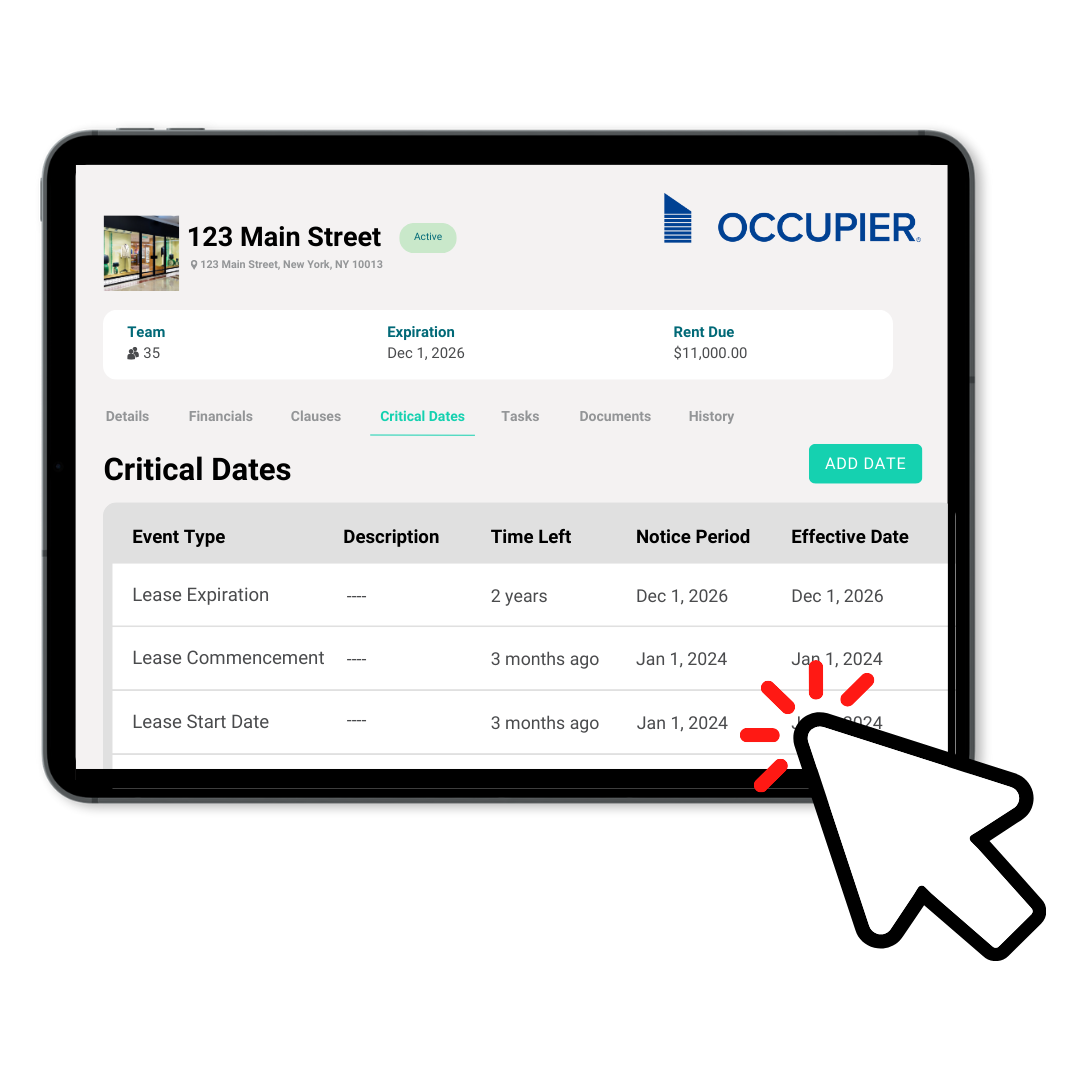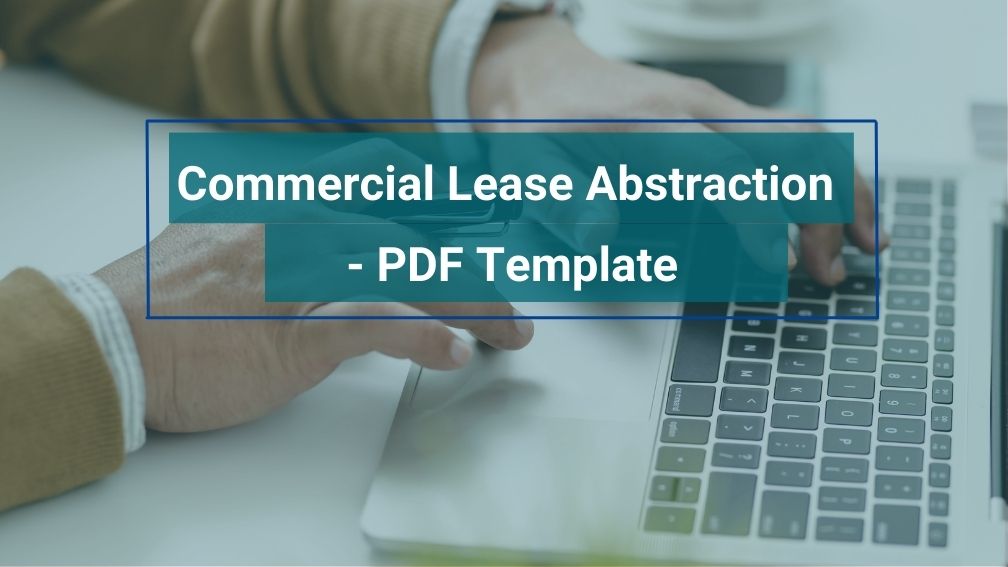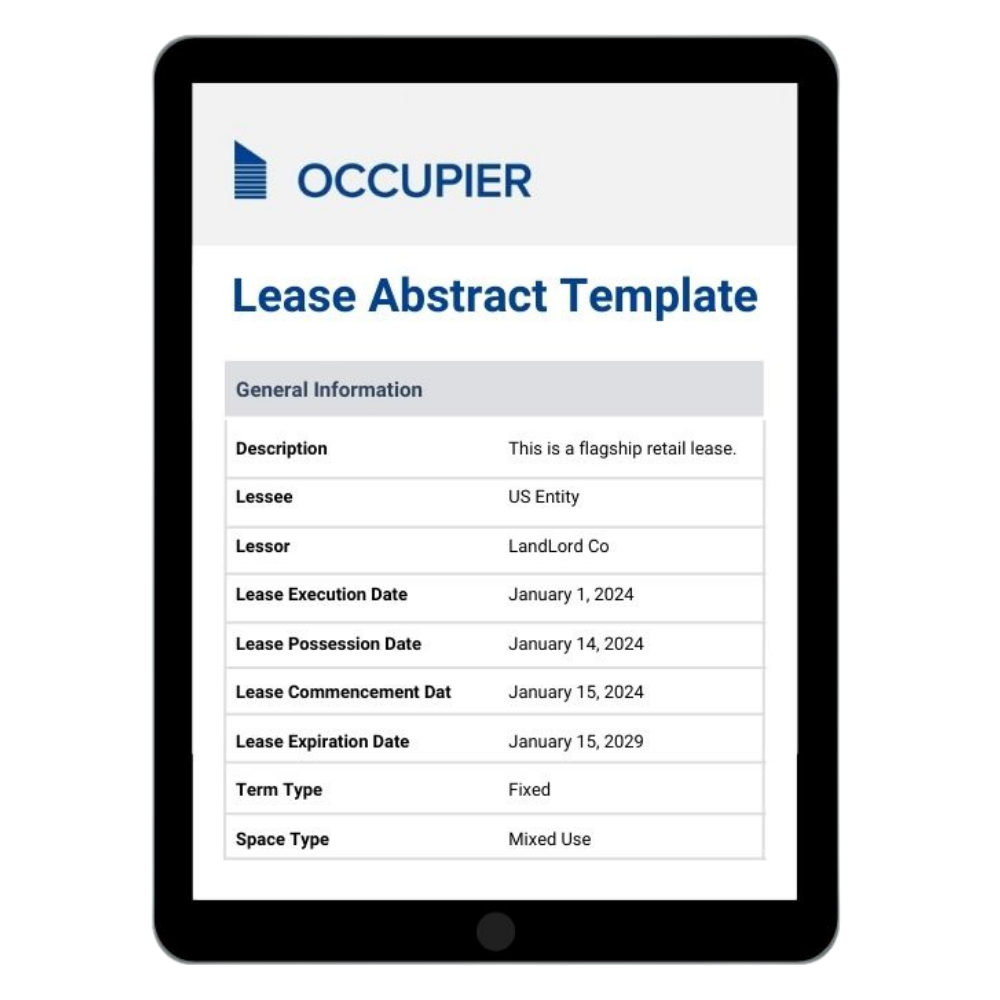Pillars of Commercial Lease Abstraction – Template
Last Updated on July 24, 2025 by
Are you a commercial tenant looking to streamline your real estate leases and reduce administrative friction? Lease abstraction may be the solution you need. By summarizing the most essential information in a lease agreement, lease abstraction empowers commercial real estate teams to make faster, more strategic decisions across their lease portfolio.
In this guide, we’ll walk through the pillars of commercial lease abstraction and provide a downloadable lease abstract template, a practical tool for capturing critical lease data and optimizing your due diligence processes.
Lease Abstraction Explained
What is lease abstraction? Lease abstraction is the process of extracting and summarizing detailed information from a commercial lease. This includes critical lease data such as lease dates, rent provisions, financial responsibilities, and option terms. By distilling this crucial data into a structured format, tenants gain quick access to the most important legal and financial elements of their leases.
Lease abstraction enhances the landlord-tenant relationship by improving clarity, transparency, and accountability. While commercial leases often span dozens of pages, abstraction simplifies review by organizing essential elements into consistent data points. That consistency is key — especially for large tenants managing multiple locations or a national lease portfolio.
Today, many commercial tenants rely on Automated Lease Abstraction tools to accelerate this process. These platforms reduce manual effort, ensure accuracy, and create audit-ready records of relevant information for finance, legal, and real estate teams.
The Importance of Commercial Lease Abstraction
Real estate leases contain layers of business and legal information — but not all of it is equally actionable. Lease abstraction helps tenants focus on the most important information to manage their operations and obligations effectively.
Benefits of lease abstraction include:
- Improved risk analysis: By capturing critical information, tenants reduce the chance of missing key deadlines or obligations that can lead to penalties or disputes.
- Informed financial analysis: When data points like base rent, Common Area Maintenance fees, and renewal terms are abstracted, finance teams can better forecast cash flow and allocate resources.
- Faster strategic decisions: With quick access to expansion rights, lease renewals, and termination options, real estate teams can evaluate site performance and negotiate smarter.
Whether your team manages a single property or a large portfolio, organizing lease data into an abstract improves collaboration and ensures that crucial data doesn’t get buried in complex documents.
Download the Lease Abstract PDF Template
Pillars of Commercial Lease Abstract
By abstracting the essential information from a lease agreement, commercial real estate professionals can effectively manage their leases and properties, ultimately leading to a more successful and profitable real estate business. We will dive into the key pillars of data that should be included in your lease abstract documents.
Pillar 1: General Lease Information
This section outlines the lease’s basic information, including the parties involved, property address, lease commencement date, and expiration date. It also includes specific information such as square footage, property use, and any zoning or operational restrictions.
Understanding this essential information helps tenant teams uphold the terms of their lease and avoid unnecessary conflicts. Restrictions like exclusive use clauses or limitations on alterations should be clearly noted here to avoid operational surprises down the line.
General lease information acts as a foundation — one that supports the more detailed information captured in the financial, legal, and operational sections of your abstract.
Pillar 2: Financial Information
Financial data is central to any lease abstraction. This section captures rent amounts, rent escalation schedules, percentage rent provisions, and Common Area Maintenance costs (CAM).
Include details like:
- Base rent and frequency
- Rent abatement or free rent periods
- Operating expense obligations (e.g., property taxes, insurance, maintenance costs)
- Revenue-sharing agreements or rent adjustments tied to sales performance
This financial information gives accounting and real estate teams the visibility needed for proper budgeting, cash flow planning, and forecasting. Accurate data input here ensures alignment with internal stakeholders and external equity partners.
Pillar 3: Lease Amendments
Commercial leases evolve over time. Lease amendments capture any updates made after the original agreement was signed — including lease renewals, rental rate changes, term extensions, and space modifications.
Abstracting amendments helps keep your lease records current and ensures compliance with ASC 842 lease accounting standards. Tracking modifications a lease modification under ASC 842 in a structured way also prevents misalignment between real estate, accounting, and legal teams — especially during audits.
Amendment data is a must-have for strategic decisions related to renewals, terminations, or relocations. It’s also crucial for tracking landlord-tenant obligations that have shifted post-signing.
Pillar 4: Critical Dates
The critical dates section is vital for managing time-sensitive events in your lease. Include lease start and end dates, rent increase dates, renewal deadlines, option exercise windows, and expansion rights timelines.
Missing critical lease dates can trigger automatic renewals, late fees, or loss of negotiation leverage. Abstracting these deadlines — along with any associated notice periods — protects your organization from unnecessary expenses or disruptions.
For every date captured, include a short risk analysis outlining the business impact of missing that deadline. This keeps your team proactive and aligned with key lease milestones.
Pillar 5: Clauses
Lease clauses detail the rules and responsibilities for both parties. This section includes important legal terms such as:
- Maintenance obligations (tenant vs. landlord)
- Insurance requirements
- Repair responsibilities
- Exclusive use clauses
- Alteration and improvement terms
Facility and property managers rely on this section for day-to-day operations. Abstracting clauses also help ensure compliance with lease requirements and reduce the risk of violating terms that could lead to legal disputes.
Because clauses vary greatly between leases, organizing them in a consistent format makes it easier to compare and manage obligations across your portfolio.
Pillar 6: Custom Data
No two leases are the same. The custom data section allows you to capture lease-specific terms or operational provisions that don’t fit neatly into other categories.
Examples include:
- Special parking arrangements
- Noise or signage restrictions
- State-specific compliance requirements
- Unique incentive structures or financial penalties
Custom data ensures that all relevant information is captured, even if it’s unique to a specific location. For tenants with a broad real estate footprint, documenting these details supports informed decision-making across teams.
Lease Abstract – Download the Customizable Template:
To simplify your lease abstraction process, we’ve created a downloadable Lease Abstract Template designed for commercial tenants. It’s built around the six pillars above and supports both manual and automated lease abstraction workflows.
This customizable tool allows you to capture all the essential elements of a commercial lease, including:
- Base rent and financial data
- Lease dates and renewal options
- Relevant clauses and obligations
- Expansion rights and key deadlines
- Critical information from amendments
- Custom operational details
Having this abstract on file ensures that everyone from accounting to asset management has access to the same, up-to-date data. It also serves as a reference point during property evaluations, renewals, or acquisitions.
Why Use Occupier?
Occupier is purpose-built from the perspective of the commercial tenant, enabling real estate teams and lease accounting teams to collaborate on the entire leasing process. We know that lease abstracts are important documents to distill your long lease contracts into digestible data points. So, with our lease management software, you can export your lease data via automated lease abstraction to share with your tenant-rep brokers, legal teams, and facilities teams. Take a tour to see how Occupier real estate software powers your strategic decisions.

Product Tour
Take a self-guided tour and see how the fastest-growing commercial tenants leverage Occupier for lease management & lease accounting.

